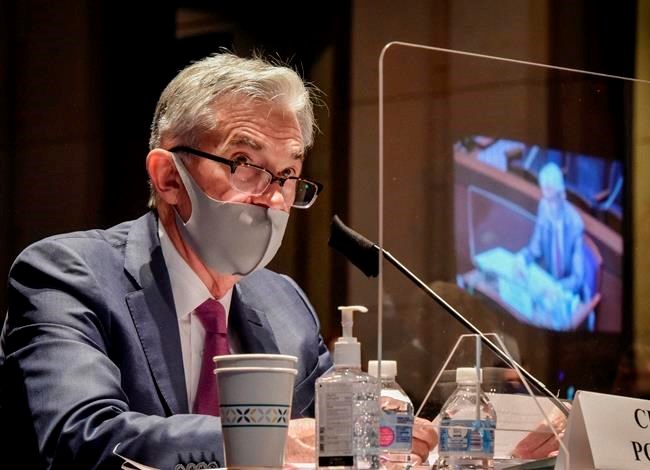WASHINGTON — With the economy still struggling to recover from the pandemic recession, Federal Reserve policymakers
Fed chair Jerome Powell said at a press conference that while the economy has rebounded more quickly than expected, the job market is still hurting and the outlook is uncertain. The unemployment rate has fallen steadily since the spring but is still 8.4%.
"Although we welcome this progress we will not lose sight of the millions of Americans that remain out of work," Powell said.
The Fed left its benchmark interest rate unchanged at nearly zero, where it has been pegged since the virus pandemic intensified in March. The rate influences borrowing costs for homebuyers, credit card users, and businesses. Fed policymakers hope an extended period of low interest rates will encourage more borrowing and spending, though their policy also carries the risk of inflating a bubble in stocks or other financial assets.
Fed officials said in a set of quarterly economic projections that they expect to keep rates at zero through 2023. And in a statement released after its two-day meeting, the Fed said it wouldn't raise borrowing costs until inflation has reached 2% and appears likely to "moderately exceed” that level for an extended period.
The Fed's projections show that policymakers don't expect inflation to hit that target until the end of 2023.
“The Fed is now more dovish, by a long shot, than it has ever been,” said Stephen Stanley, chief economist at Amherst Pierpont. Dovish means keeping borrowing costs low to support more hiring.
On Wall Street, stocks initially got a short boost from the Fed’s actions before turning lower. The S&P 500 fell 0.5%. Still, some market analysts liked what they heard from the Fed.
“A better economy and a dovish Fed, that is a nice combo,” said Ryan Detrick, chief market strategist for LPL Financial.
But many analysts were disappointed the Fed was not more specific about how long it wanted inflation to stay above 2%, one likely reason that the stock market ultimately fell.
Carl Tannenbaum, chief economist at Northern Trust, said the Fed will likely keep rates at nearly zero for at least five years. The Fed held its rate that low for seven years during and after the 2008-2009 recession.
The Fed ultimately first hiked rates in December 2015, when the unemployment rate was 5%. On Wednesday, the Fed projected that it will keep rates at zero in 2023 even as it forecasts unemployment will fall to 4%.
Powell said the Fed's benchmark rate will stay low “until the expansion is well along, really very close to our goals and even after."
The Fed has significantly altered its inflation goal, from simply reaching to 2% to pushing inflation above that level so that it averages 2% over time. That is intended to offset long periods of inflation below that level.
If businesses and consumers come to expect increasingly lower inflation, they act in ways that entrench slower price and wage gains, which can be a drag on economic growth.
Powell reiterated his support for more spending by Congress to help the economy recover. Congress is deadlocked on more financial relief because of disagreements on the size of the package between Democrats and Republicans. Some earlier measures aimed at helping consumers, such as an extra $600 in unemployment benefits, have expired.
“My sense is that more fiscal support is likely to be needed,” Powell said.
The Fed also said Wednesday that it will continue purchasing about $120 billion in Treasurys and mortgage-backed securities a month, in an effort to keep longer-term interest rates low. Since March, the Fed has flooded financial markets with cash by making such purchases and its balance sheet has ballooned by about $3 trillion.
The Fed announced a broad update to its overall strategy last month, in which it said that its goal of reaching “maximum employment” is “a broad and inclusive goal.”
Powell said Wednesday that Fed will consider the unemployment rate for Blacks and other disadvantaged groups when it makes its interest-rate decisions. Activists have argued that in the past the Fed has hiked rates when joblessness among African-Americans was still too high. Democrats in Congress have introduced legislation to require the Fed to take unemployment rates for different groups into account.
“If we want to have the highest potential output and the best output for our economy we need that prosperity to be very broadly spread in the longer run,” he said.
On Wednesday, the latest economic report seemed to support Powell's view of an economy on the mend but not fully healthy. The Commerce Department said retail sales rose 0.6% in August, the fourth straight gain but the slowest since sales started growing again in May. The figure suggests that the end of the extra $600 in unemployment benefits weighed on spending.
___
Martin Crutsinger in Washington and Alex Veiga in Los Angeles contributed.
Christopher Rugaber, The Associated Press


